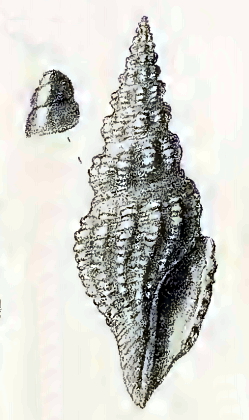
Inquisitor insignita is a species of sea snail, a marine gastropod mollusk in the family Pseudomelatomidae.
Problepsis insignita is a moth of the family Geometridae. It is found on Sulawesi.

Phytoecia is a genus of longhorn beetles of the subfamily Lamiinae,
Phytoecia gianassoi is a species of beetle in the family Cerambycidae. It was described by Sama in 2007 and later reclassified to the subgenus Coptosia within the genus Phytoecia.
Phytoecia paulusi is a species of beetle in the family Cerambycidae. It was described by Holzschuh in 1971.

Phytoecia puncticollis is a species of beetle in the family Cerambycidae. It was described by Faldermann in 1837. It is known from Russia, Azerbaijan, Georgia, Iraq, Armenia, Turkey, Iran, and Turkmenistan. It feeds on Eryngium billardierei.
Phytoecia gaubilii is a species of beetle in the family Cerambycidae. It was described by Mulsant in 1851. It is known from Tunisia and Algeria.

Phytoecia comes is a species of beetle in the family Cerambycidae. It was described by Henry Walter Bates in 1884. It is known from Taiwan, Myanmar, North Korea, South Korea, China, Vietnam, and Japan.
Phytoecia humeralis is a species of beetle in the family Cerambycidae. It was described by Waltl in 1838, originally under the genus Saperda. It is known from Palestine, Greece, Georgia, Iran, Azerbaijan, Syria, Cyprus, and Turkey. It feeds on Silybum marianum.
Phytoecia millefolii is a species of beetle in the family Cerambycidae. It was described by Adams in 1817, originally under the genus Saperda. It has a wide distribution between Europe and the Middle East.
Phytoecia affinis is a species of beetle in the family Cerambycidae. It was described by Harrer in 1784, originally under the genus Leptura. It has a wide distribution in Europe.

Phytoecia caerulescens is a species of beetle in the family Cerambycidae. It was described by Scopoli in 1763, originally under the genus Leptura. It has a wide distribution in Europe, and has been introduced into Australia. It feeds on Echium vulgare, Lappula squarrosa, Anchusa officinalis, Lithospermum officinale, and Cynoglossum officinale.

Phytoecia caerulea is a species of beetle in the family Cerambycidae. It was described by Scopoli in 1772, originally under the genus Leptura. It has a wide distribution in Europe.

Phytoecia icterica is a species of beetle in the family Cerambycidae. It was described by Schaller in 1783, originally under the genus Saperda. It has a wide distribution between Europe and the Middle East. It feeds on Daucus carota sativus, Petroselinum crispum, Pastinaca sativa sativa, Pastinaca sativa, Conium maculatum, and Pimpinella saxifraga.

Phytoecia rufiventris is a species of beetle in the family Cerambycidae. It was described by Gautier des Cottes in 1870. It is known from Russia, Japan, Taiwan, Mongolia, North Korea, South Korea, China, and Vietnam. It feeds on Artemisia vulgaris.
Phytoecia hirsutula is a species of beetle in the family Cerambycidae. It was described by Frölich in 1793, originally under the genus Saperda. It has a wide distribution between Europe and the Middle East.
Phytoecia sylvatica is a species of beetle in the family Cerambycidae. It was described by Hintz in 1916, originally under the genus Obereopsis. It is known from the Democratic Republic of the Congo. It contains varietas Phytoecia sylvatica var. atroapicalis.

Astrogenes insignita is a species of moth in the family Tineidae. It was described by Alfred Philpott in 1930. This species is endemic to New Zealand.
Chersodromia insignita is a species of hybotid dance fly in the family Hybotidae.

Pseudocoremia insignita, also referred to by the common name tree nettle flash, is a species of moth in the family Geometridae. It is endemic to New Zealand.









